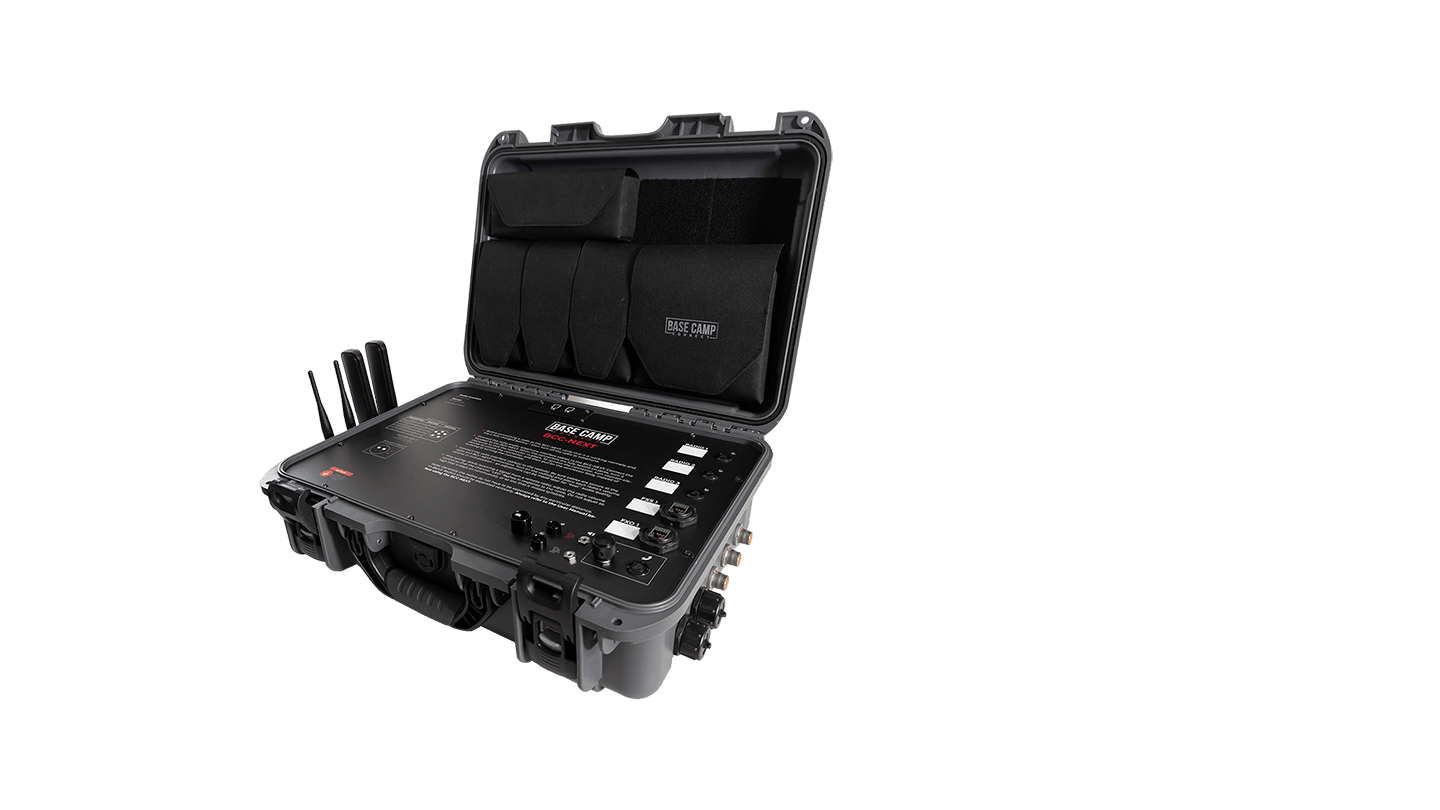I’ve been a commercial drone pilot in the United States for many years. During that time, I had the pleasure of working with several organizations that benefitted from the synergies achieved by integrating drones with ground communication systems. While there are many use cases where this is seen, one of the most prominent examples is during disaster response situations.
It is difficult to imagine a time when effective communication are needed more than during a disaster. Coordinating efforts between various agencies and organizations, deploying resources to where they are most needed, and keeping responders and the affected population safe require reliable and effective communications. Traditional communication systems are vitally important during these events but are not without their limitations. Coverage issues, difficulties in real-time data transmission, interoperability, and the ability to rapidly adapt are hurdles responders must face.
Every tool capable of addressing these limitations must be explored. Some excellent solutions already address issues like interoperability. Others, like those listed above, need additional support from innovative solutions. One such solution can be found in Uncrewed Aerial Vehicles (UAVs), otherwise known as drones. Drones can enhance situational awareness and operational efficiency when properly integrated with ground communication systems.

Ground Communication Systems in Disaster Response
Traditional ground communications resources during disaster responses have included radio networks, cellular networks, and satellite communications. Each of these systems serves a vital role during disasters, but they are not without their limitations.
Radio Networks
While radio networks are very reliable, they often have range limitations. Additionally, physical obstacles, such as mountains and environmental conditions, can cause disruptions.
Cellular Networks
Thanks to their reliability and the high speed at which they can transfer data, many communication resources rely on cellular networks. These networks are very susceptible to damage during disasters.
Satellite Communications
While these networks offer extensive coverage, they are often expensive and can suffer from latency issues.
Even with these challenges, ground communications offer a solid foundation as communication assets during disaster response efforts. Enhancing these systems with drone technology can address some of the limitations and significantly improve the overall response of relief efforts during and after a disaster event.

Drones as Force Multipliers in Disaster Response
Drones offer unique capabilities, making them ideal additions to ground communications in disaster response efforts. In addition to capturing data from perspectives that cannot be obtained from the ground, other unique capabilities include the following.
Rapid deployment
Thanks to their portability, drones can be deployed rapidly in disaster situations where they are needed most. Many drones take less than ten seconds to deploy. Responders can begin building situational awareness almost immediately.
Remote sensing
Drones can be equipped with a wide range of sensors that aid in capturing data, such as high-resolution cameras, thermal sensors, and LiDAR.
Communication relays
Some drones are capable of serving as airborne communication relays. In this role, UAVs can extend the range and coverage of ground communication networks.
Accessibility
When disasters strike, many areas become difficult to reach. Building collapses, flooding, fires, and other hazardous environments make it difficult for humans to enter an area. Drones can access these areas without putting people at risk.
When first responders add drones to their ground communication capabilities, they get access to these benefits and more. As you can see, drones can significantly increase the operational effectiveness of disaster response efforts.
While the advantages of using drones are numerous, the three most important benefits to consider are enhancing situational awareness, extending communication networks, and improving operational efficiency. Let’s explore each of these in a little more depth.

Enhanced Situational Awareness
No disaster response can be successful without situational awareness. An understanding of the current conditions of the affected area is the foundation of a response plan. Drones are excellent tools for building situational awareness for several reasons.
Real-time aerial surveillance
Even when communications networks are degraded, drones can fly above damaged zones and collect real-time aerial data. This information can be used to assess damage, locate survivors, and plan responses. High-resolution cameras can be used to transmit live feeds to command centers and provide details that ground-based search efforts would be unable to produce.
Thermal imaging
After a disaster strikes, thermal imaging can be very useful. Fires can easily be detected, as well as the heat signatures of survivors in certain conditions. Some cameras have a high enough resolution to even monitor the changing temperatures of structures. This information can be used to detect gas leaks or structural weaknesses.
Geospatial mapping
When equipped with LiDAR or high-resolution cameras, drones can create 3D maps and models of the affected area. These maps are excellent tools for planning search and rescue efforts and coordinating the logistics of a disaster response effort.
Environmental monitoring
Disasters create hazardous environments for humans. Smoke, radiation, chemical contamination, and other toxins can be detected and monitored using drones.

Extending Communication Networks
Given the limitations of ground communication networks, one of the best benefits of using drones is their ability to extend communication networks. Natural or human-made disasters often degrade or destroy traditional communication infrastructure. This damage can create coverage gaps or even dead zones. Drones can address these issues in several ways.
Airborne communication relays
When equipped with appropriate payloads, drones can extend the coverage of radio and cellular networks. This is particularly useful when operating in remote or difficult-to-reach areas. For example, if a disaster such as a mudslide occurs in a deep valley, a relay will likely be needed to establish communications. Tethered drones can be extremely useful in this role.
Mesh networks
If you are looking to create ad-hoc mesh networks, drones are a great platform to consider. Using drones adds flexibility and resiliency to mesh networks when they are needed most.
Data hubs
As data is collected in a disaster situation, having a centralized data collection point is essential. First responders need this information to coordinate an effective response. Drones are great at serving as data hubs and can easily transmit information to a central location.

Improving Operational Efficiency
If there is ever a time when operational efficiency needs to be achieved, it is in response to disasters. Very few events have the potential for such a significant loss of life and property than these destructive events. There are three key areas where drones can directly impact efficiency when integrated with ground communication systems.
Resource allocation
When resources are limited and the need is great, getting the right supplies to the right people at the right time is critical. This is especially true when lives hang in the balance. The real-time data collected by drones can help to prioritize medical supplies, equipment, and guide rescue teams to where they are needed most.
Coordination
Aerial perspectives make it easier to coordinate efforts. Drones can help to detect gaps in coverage and serve as a bridge between various agencies.
Safety
I’ve served on numerous search and rescue operations. These efforts are almost always coordinated with handheld radios. It is often difficult to explain the “situation on the ground” to command centers, causing frustration and sometimes duplication of efforts. Drones help to keep teams safe by providing a shared aerial perspective. Teams on the ground can be notified of potential hazards to avoid, and command centers can see what safety issues teams are confronting.
Challenges and Considerations
The benefits of integrating drone and ground communications are numerous, but there are some challenges organizations will need to address. Regulatory restrictions are one obstacle that can be very frustrating to overcome. I was a member of one county’s search and rescue team for several years, where concerns over privacy issues prevented any drone from being used for official functions. There were many times I felt like we could have found someone much faster if drones were part of the search. Additional restrictions such as altitude limitations, no-fly zones, and restricted areas may also cause frustration.
Like any tool, drones require personnel to be trained on how to use them. Using drones to extend networks or establish data hubs requires the skill of a drone pilot and someone trained to create the architecture for these systems. If you or your organization are interested in using drones for this purpose, ensure the equipment is purchased before a disaster and that personnel are properly trained to perform this task.
A final consideration when integrating drones is data protection. In this day and age, cybersecurity is a real threat. Some drones, like tethered UAVs, transmit data over cables making them relatively secure. Other drones will require cybersecurity experts on the team to ensure the data collected is secure and only accessed by those with the proper permissions.
Addressing these issues is important if you wish to gain the most out of integrating drones with ground communication systems.
Establishing and maintaining effective ground communication systems during disasters is essential. Traditional systems face some limitations during these events that can be mitigated or altogether negated by integrating drones into your operations. With their ability to improve situational awareness, extend ground communication networks, and provide real-time data transmissions, drones are an indispensable tool for first responders.
Although drones come with their own set of challenges, with the right equipment and proper training, they can be seamlessly integrated into existing standard operating procedures for disaster response. The benefits of UAV technology merit further exploration if you are involved in this type of work. You’ll likely find that drones can greatly improve your existing ground communication systems capabilities.
Liked this blog post? Stay tuned by subscribing to our blog!














